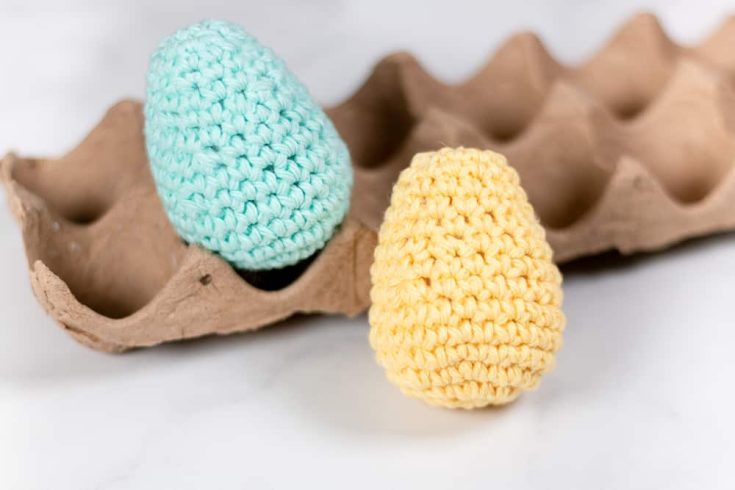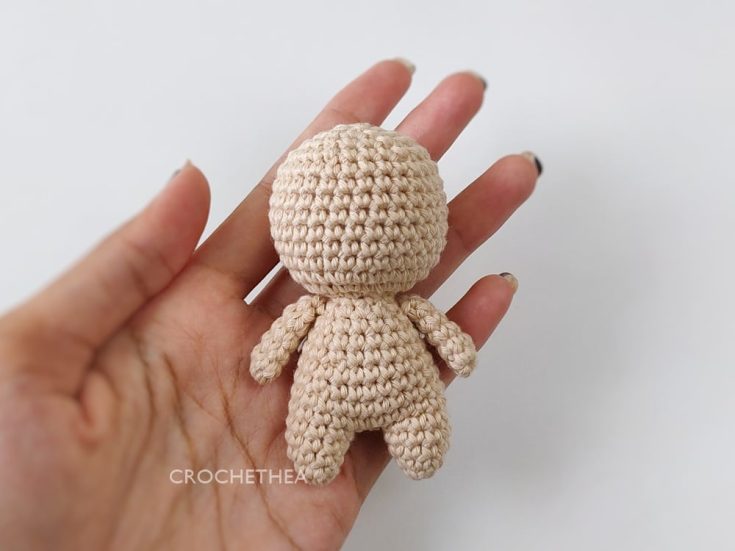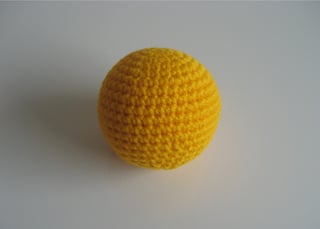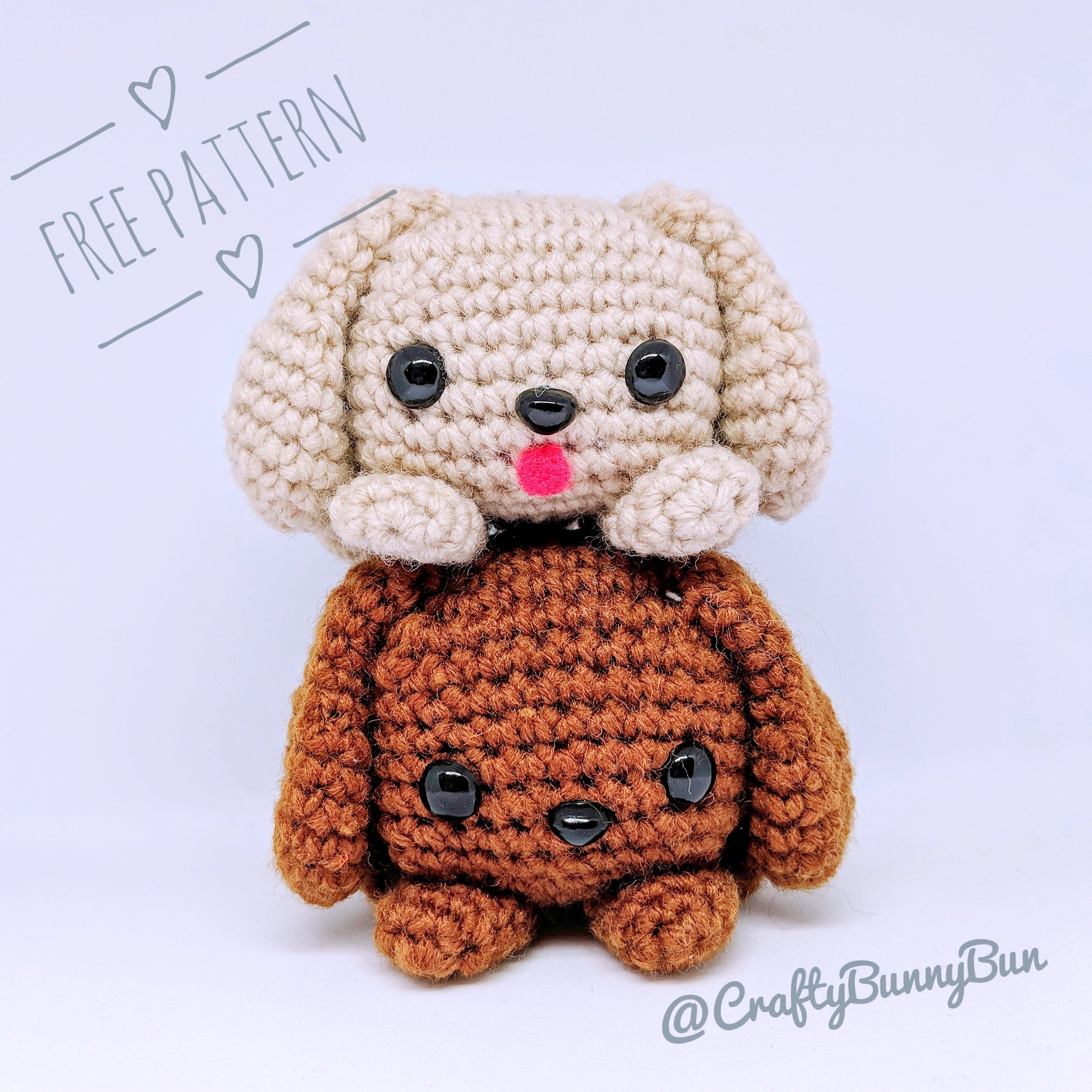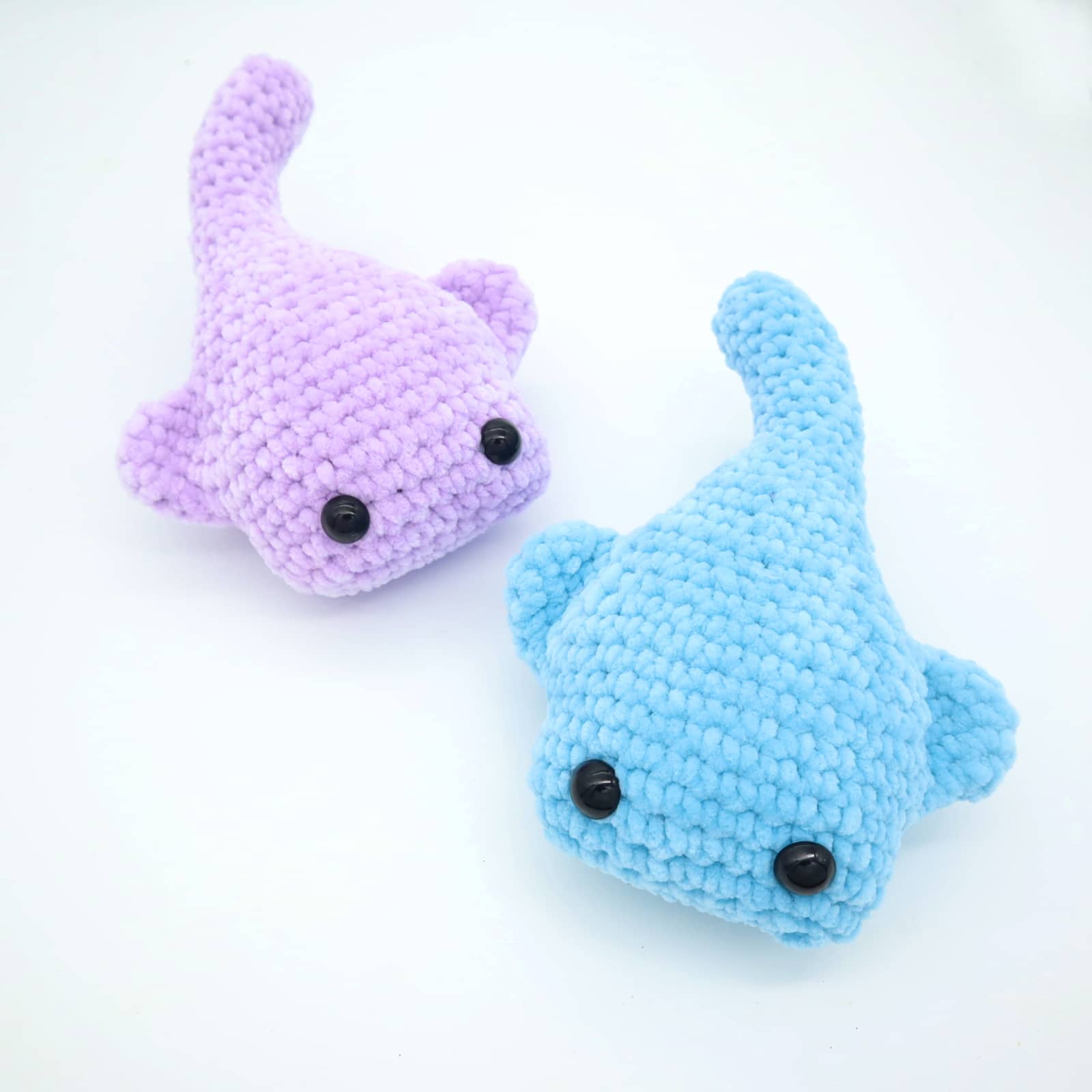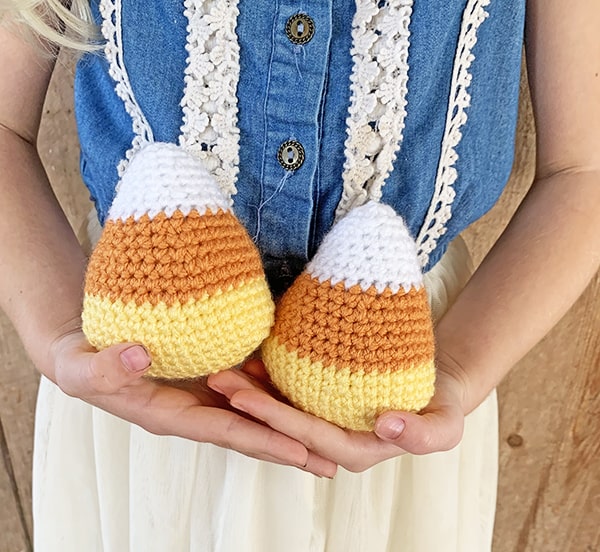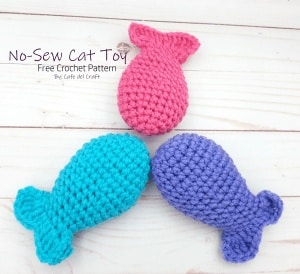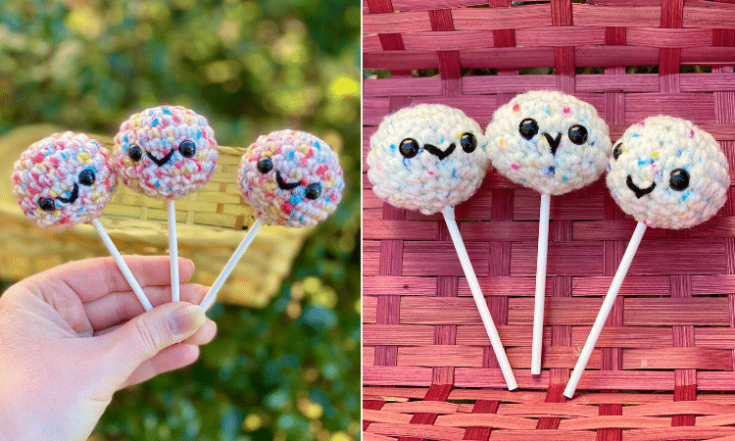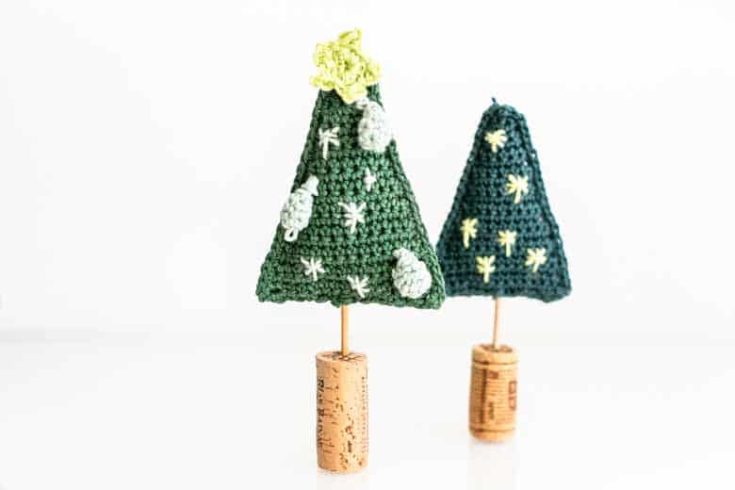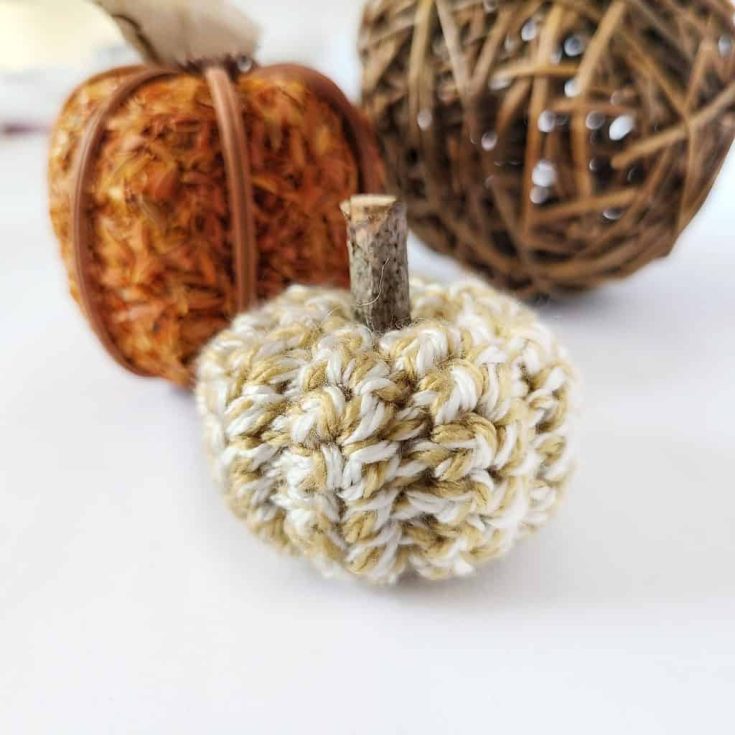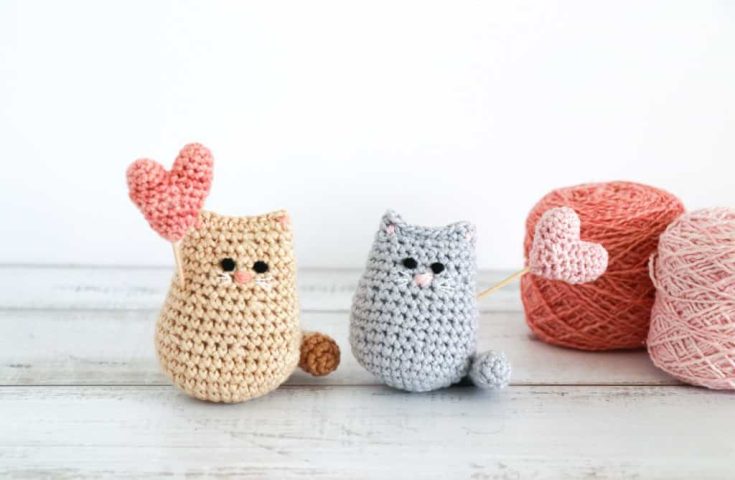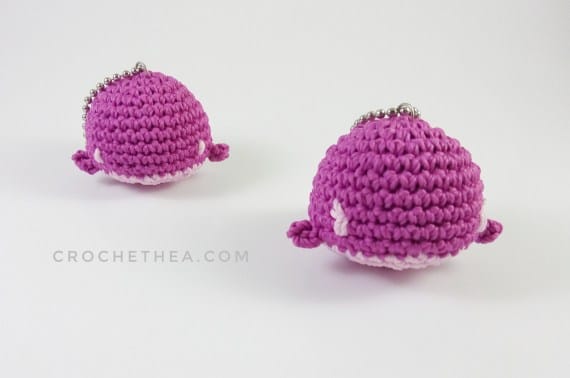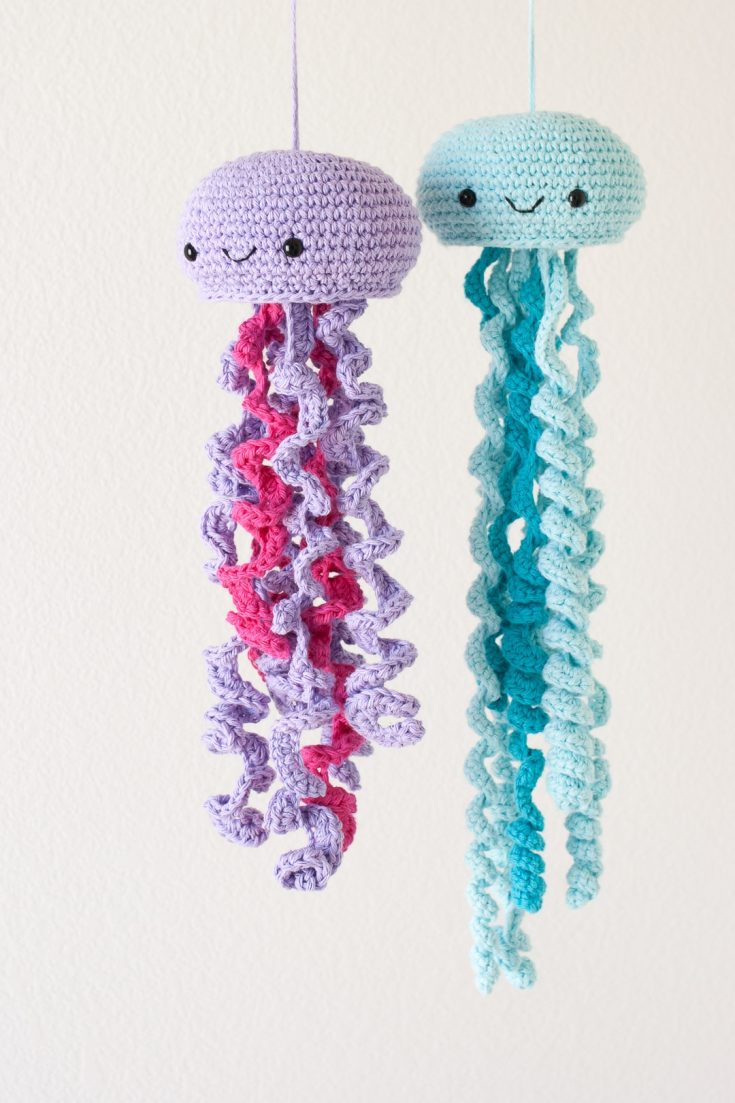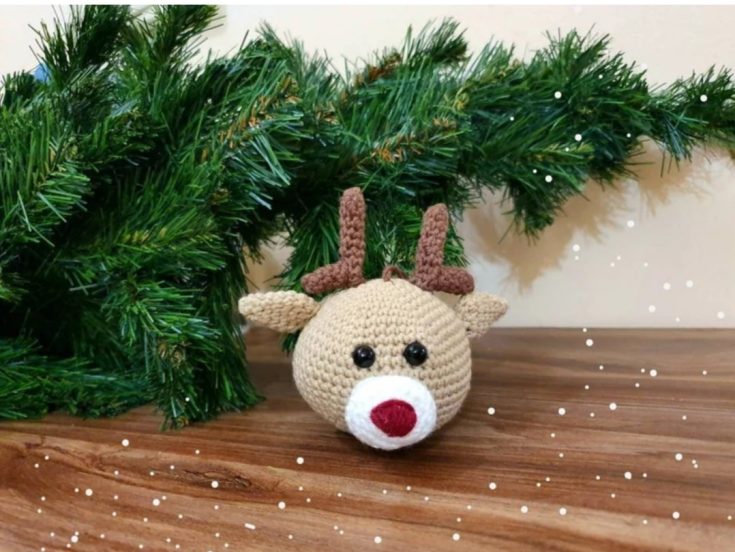21 Beginner-Friendly Crochet Amigurumi Patterns
If you’re interested in trying your hand at crochet but aren’t sure where to start, amigurumi can be a fantastic option for a beginner. It’s easy and fun to make cute stuffed animals using crochet.
Plus, you’ll end up with a cute toy like a carrot, plant, or crochet egg (I designed this one!) that you can keep or give as a gift to someone special.

Below, you’ll learn about what amigurumi is, what you’ll need to begin an amigurumi project, tips and tricks, as well find some of the best easy amigurumi patterns for beginners to get you started!
What is Amigrumi?
According to Wikipedia, amigurumi is the Japanese art of knitting or crocheting small, stuffed yarn creatures.
Amigurumi are typically crocheted using yarn and a small crochet hook. They are often made in a spherical or cylindrical shape and then stuffed with fiberfill to give them a three-dimensional form. Amigurumi can be made in various shapes and sizes, from small keychain-sized creatures to larger plush toys.
Before starting a crochet amigurumi project as a beginner, there are a few things you should know as a beginner. Below, explore the basic stitches, techniques and supplies you’ll want to have on hand when crocheting an amigurumi pattern.
Stitches and Techniques in Amigurumi
- Single Crochet (sc): A beginner-friendly basic stitch that is most commonly used in amigurumi patterns, as well as other types of amigurumi designs. Learn how to single crochet.
- Back Loop Single Crochet (bl sc): A single crochet that is worked in the back of the v of the single crochet stitch. This technique can be used to create texture on animals and more. Learn how to back loop single crochet.
- Front Loop Single Crochet (fl sc): Working in the front loop is very similar to the back loop technique, but you will be working in the front loop of the v of the single crochet or the part that is closest to you.
- Single Crochet Increase & Invisible Decrease: These methods create seamless transitions in your toy when you’d like to make a leg go from bigger to smaller or vice versa.
- Magic Circle (mc): The magic circle is a crochet technique that creates a closed, tight bottom of a circle. It can be used for hats, place mats, circles, and animals too! Learn more about the Magic loop (aka circle, ring) to use this method.
- Changing Yarn Colors: You can learn more about changing colors in amigurumi crochet with this free video tutorial. Knowing how to change colors is helpful for a smooth transition from one color to the next in these types of patterns.
- Attaching Parts: You will need to know how to attach arms, legs, heads, and tails to some of these amigurumi patterns.
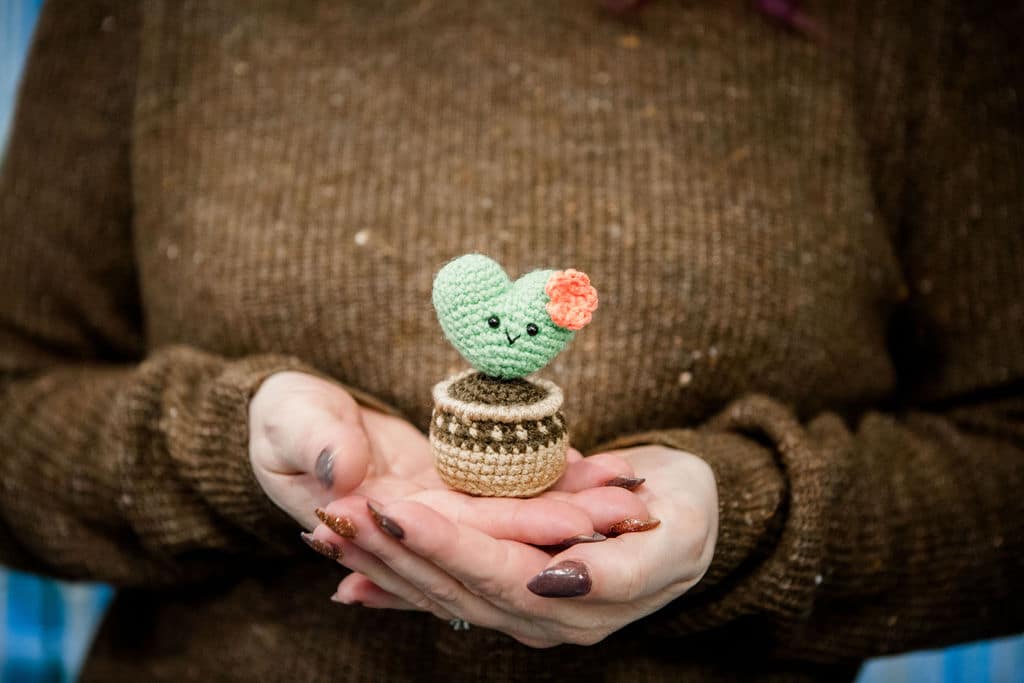
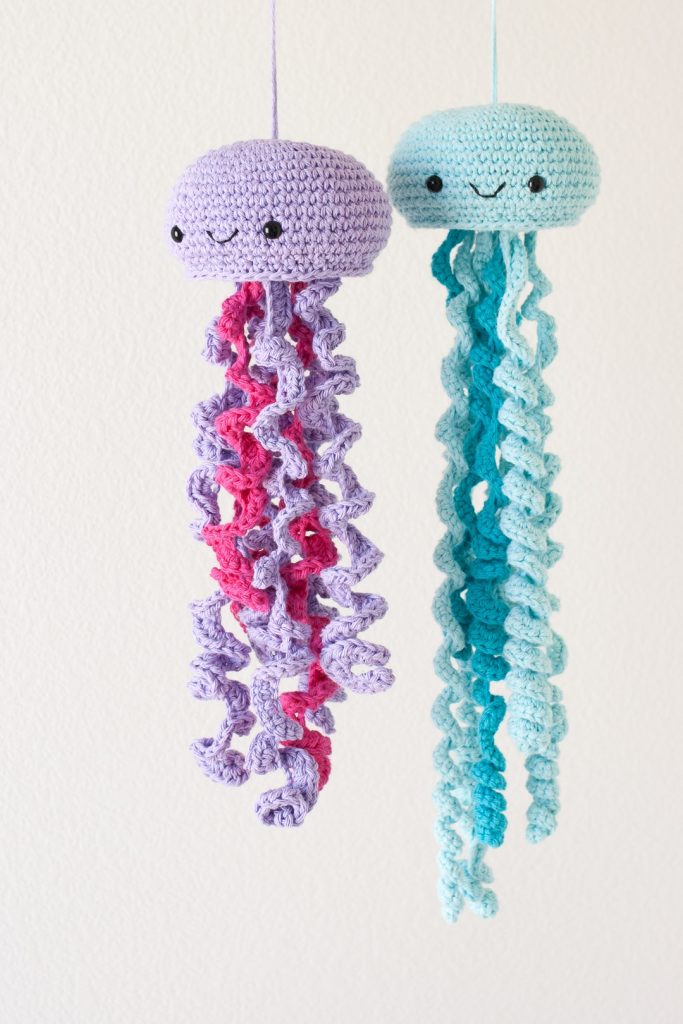

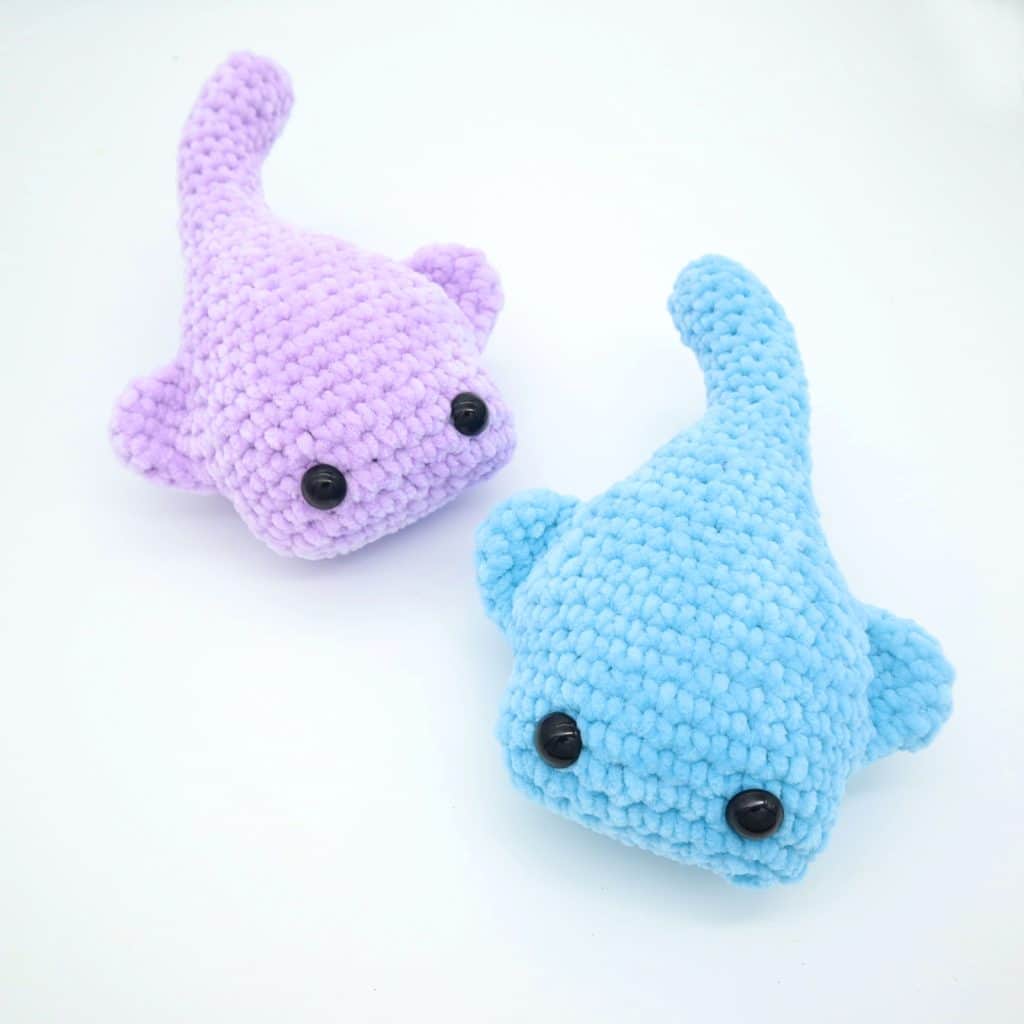

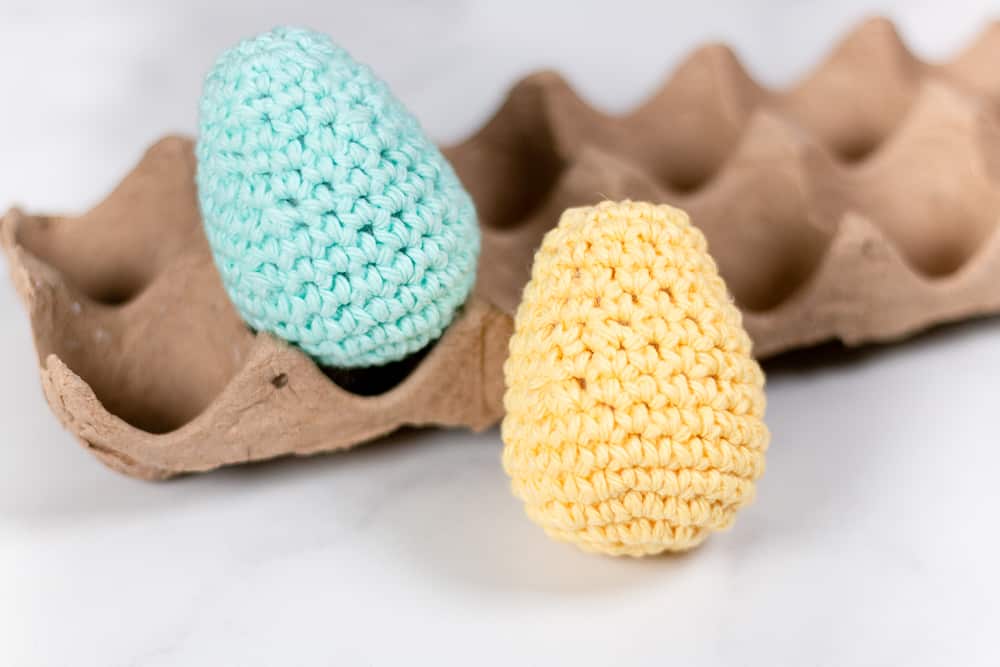
Crochet Supplies for Amigurumi Patterns
- Stitch Markers: A stitch marker is important to keep track of the rounds you are working in these easy amigurumi patterns. You will work most toy designs in continuous rounds vs. joined rounds, so it is critical to be able to keep track of the rounds with this marker.
- Crochet Hook: You’ll find that amigurumi patterns will use a smaller sized crochet hook than the yarn they are using calls for. This is because it will create a tighter single crochet stitch in the pattern, which in turn makes a cleaner looking end product.
- Safety Eyes: Most of the crocheted amigurumi patterns you will find to make use safety eyes. These are usually plastic snap together pieces that form an eye in amigurumi. If you prefer not to use safety eyes, you can surface crochet eyes onto almost any animal instead with yarn or embroidery thread.
- Yarn: While almost any yarn can be used for amigurumi patterns, the most commonly used weight is Light/DK or Medium/Worsted weight yarn. An animal made with DK yarn will be slightly smaller than one made with worsted weight medium yarn, but that is typically the preferred outcome. I also suggest using a brighter yarn as a beginner because it can be tough to see stitches in dark yarns like black, for example. The types of fiber uses can vary, but the post popular are a cotton yarn or acrylic yarns (they are easy to find in fun colors) I’ll discuss the best yarn for amigurumi patterns more below.
- Pins: Pins make it easy to join extra pieces (nose, yarn eyes, etc.) of the crocheted toy, so when they are sewn on they are in the correct spot, or you can use the no sew method taught here.
- Yarn Needle: You will need this to attach legs, tails etc. as well as weaving in ends. I love using bent tip tapestry needles for amigurumi, but straight needles can be used for eyebrows and lines too.
- Stuffing: Most amigurumi patterns will have stuffing or fiber fill, so this is an important material to have on hand. Polyfill is my personal favorite.
- Scissors: You will need scissors to cut the yarn end when you are done crocheting your animal design. A good pair of stork scissors are great for cutting yarn smoothly.
- Wooden Stick: A popsicle stick is useful to help fill and shape the amigurumi projects.
- Wire: Sometimes you will see an amigurumi pattern that requires wire to shape ears, tails and other parts of whatever you are making like an amigurumi animal.
By having all the necessary materials on hand, you’ll be ready to start creating your amigurumi. Once you’ve practiced the basic techniques, you can experiment with different yarns, hooks, and patterns to make your amigurumi truly unique.
What is the Best Yarn to Use for Amigurumi?
Choosing the right yarn for an amigurumi pattern is important to ensure that your project turns out as intended. Here are some of the best yarns for amigurumi:
Cotton yarn
Cotton yarn is a popular choice for amigurumi because it is durable, easy to work with, and comes a lot of colors. It is machine washable and dryable making it easy to care for.
Lily Sugar’n Cream
This yarn is made by Yarnspirations, and is a Weight 4 – Medium yarn.
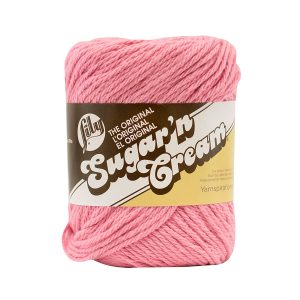
Fiber: 100% Cotton
Yardage: 645 meters / 706 yards (varies)
Hook: 5 mm (H-8)
Substitute: Bernet Handicrafter
Acrylic yarn
Acrylic yarn is another great choice for amigurumi, especially for beginners. It is affordable, widely available, and comes in a range of colors. Acrylic yarn is also soft and easy to work with, making it ideal for creating cuddly toys.
Vanna’s Choice
This yarn is made by Lion Brand, and is a Weight 4 – Medium yarn.
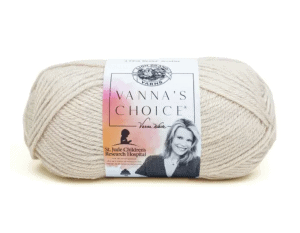
Fiber: 100% Acrylic
Yardage: 156m / 171 yds
Hook: 5.5 mm (I-9)
Substitute: Lion Brand Heartland
Wool yarn
Wool yarn is another option for amigurumi, although it may not be the best choice for all projects. It can be more difficult to work with than other yarns, and it may not be as durable or machine washable. However, wool yarn can provide a beautiful texture and warmth to your finished toy.
Wool-Ease
This yarn is made by Lion Brand, and is a Weight 4 – Medium yarn.
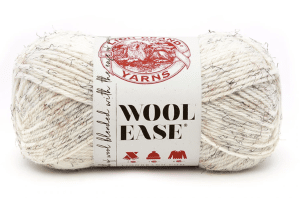
Fiber: 86% Acrylic, 10% Wool, 4% Viscose
Yardage: 197
Hook: 6 mm (J-10)
Substitute: Vanna’s Choice
Tip: When selecting a yarn for your amigurumi project, it is important to consider the pattern requirements and the characteristics of the yarn. For example, a fuzzy yarn may be hard to work with as a beginner, so practice before attempting this type of yarn in amigurumi patterns. My best advice is to look for a yarn that is soft, easy to work with, and comes in a range of colors.
What Makes For an Easy Amigurumi Pattern?
Most easy amigurumi pattern typically has the following characteristics in common:
By looking for these characteristics in patterns, beginners can find easy amigurumi patterns that are enjoyable to crochet and produce adorable results.
What to Do Before Starting an Amigurumi Pattern as a Beginner
There are a few things you should do before beginning an amigurumi pattern.
Read the Pattern
To prepare for working on a beginner crochet amigurumi pattern, it is recommended to first read the pattern from beginning to end. This allows you to familiarize yourself with the steps involved, the crochet stitches, as well as any special techniques required.
Gather Supplies
Additionally, gather all the necessary crochet supplies before beginning the project to ensure that you have everything you need. Most patterns include a supplies list, which can be used to double-check that you have all the required materials on hand.
With the right pattern and a bit of practice, you can quickly create your own amigurumi collection, even if you are new to amigurumi.
Why You’ll Love Amigurumi
Crocheting amigurumi offers a range of benefits that go beyond the simple pleasure of creating cute and cuddly toys. Here are some of the key benefits of crocheting amigurumi:
Overall, crocheting amigurumi offers a range of benefits which makes it a fun and rewarding hobby to try.
Whether you’re a beginner or an experienced crocheter, amigurumi can provide hours of creative and relaxing fun! If this sounds good to you then take a look below to get started with some easy beginner amigurumi patterns today!
The Easiest Beginner Amigurumi Patterns
Take a look at this collection of free amigurumi crochet patterns for beginners that are all easy to make and have minimal shaping and joining.
Amigurumi Crochet Egg Pattern
Learn how to crochet an Easter egg with this beginner amigurumi pattern. It is considered beginner because it uses one stitch and is a simple shape for beginners to amigurumi designs.
Basic Body Crochet Pattern Pattern
Use this basic body pattern to learn how to make amigurumi dolls. This easy pattern is great to learn all about crocheting amigurumi dolls and will help you expand your skills.
Amigurumi Cactus Buddy Pattern
Crochet this fun crochet amigurumi cactus that is a beginner pattern. It makes an adorable and huggable cactus friend that is perfect for gift giving.
Ball Crochet Pattern
Learn how to make an amigurumi ball with this free pattern. It has instructions to make 10 different sizes of this sphere, so you can make which one works best for you.
Cube Puppy Dog Amigurumi Pattern
This puppy is a free amigurumi pattern that is easy to make. A puppy tower can be created by stacking it, which is extra cute!
No-Sew Stingray Amigurumi – Free PDF Crochet Pattern
Get the free PDF for this stingray amigurumi pattern for beginners! The best part is that this pattern is a no sew design!
Amigurumi Candy Corn
You'll love this crocheting, this super easy amigurumi pattern that has easy to follow instructions! It creates a fun home decor piece and is giftable too.
No Sew Amigurumi Cat Toy
If you can single crochet, then you can make this beginner cat toy! Not only that, but it is a no sew design too!
Amigurumi Cake Pops
Beginner crocheters can enjoy the sweetness of cake pops without the calories by trying out a fun and whimsical cake pop crochet pattern. This amigurumi pattern is easy to crochet because it only has one shape and minimal joining!
Crochet Teddy Bear- a free pattern
This is an easy amigurumi pattern that is perfect for determined beginners. The Simple Crochet Bear is made with just a few basic crochet stitches and can be customized with different colors and accessories. You can make the bear bigger or smaller by using different weight yarns and hook sizes.
Easy Christmas Tree Pattern Pattern
You can crochet this beginner amigurumi Christmas tree pattern made up with basic crochet stitches easily. It's great to put on the tree as an ornament or use as a decoration too.
Small Amigurumi Crochet Pumpkin Pattern
You can use this free amigurumi pattern to create a small pumpkin this year. It is a beginner frienldy pattern that is easy to make and uses simple crochet stitches.
Amigrumi Crochet Cat Pattern
The simple shape of this crocheted cat is perfect for beginners to amigurumi. It really is one of the best beginners amigurumi patterns to make when you are first starting!
Little Carrot Pattern
If you're new to crochet, making a crochet amigurumi carrot is an excellent project for you to start with. The pattern is simple and straightforward, making it easy for beginners to follow along and create a cute and fun toy.
Baby Whale Amigurumi Pattern
You'll love crocheting this amigurumi baby whale pattern. It uses easy crochet stitches and is fun to crochet.
Baby Octopus Amigurumi
This amigurumi octopus is a great option for anyone who is short on time and wants to use up some of their extra yarn. The best part? This project is designed to be crocheted in one piece, which means you won't have to worry about any sewing. Even if you're new to crochet, you can easily tackle this project and have a finished toy in no time.
Crochet Jellyfish
If you're looking for a fun new amigurumi project to try out, why not give this free crochet jellyfish pattern a go? With easy-to-follow step-by-step instructions and helpful photos, even beginners can create an adorable jellyfish toy in no time.
Crochet Reindeer Pattern Pattern
Make an adorable amigurumi reindeer for beginners with this free pattern. The designer states that this pattern is suitable for beginners with some crochet experience.
Heart Cactus Free Crochet Pattern
Create a miniature plant that requires no watering by crocheting this adorable mini succulent. Not only is it a cute addition to any room, but the easy pattern also makes it a perfect project for beginners.
Crochet Amigurumi Heart
Make this easy crochet stuffed heart pattern that is perfect for beginners since it uses just one stitch and is a small project. You'll also love the video tutorial as well, which makes crocheting this amigurumi pattern easy.
Amigurumi Crochet Donut
This free pattern will teach you how to crochet an amigurumi donut, perfect for beginners looking for a quick and easy project. With its fast work-up time, you'll have a cute and delicious-looking toy in no time.
More Free Amigurumi Patterns You May Like
You may also like some of our other free crochet patterns if you enjoyed the list above! You’ll find a great collection of amigurumi patterns like gnomes, cakes, and even crochet cows! I hope you find something fun to make!
- 9 Cute Crochet Chicken Patterns
- 14 Free Crochet Patterns for Adorable Gnomes
- 21 Beginner-Friendly Crochet Amigurumi Patterns
- 13 Free Crochet Cake Patterns
- Top 10 Free Patterns for Crochet Plants
- 24 Top Crochet Octopus Patterns: All Free Patterns
- 15 Fun Crochet Patterns for Fruits and Vegetables
- The Best Axolotl Crochet Pattern Collection
- 32 Free and Easy Crochet Animal Patterns
- The Top Chameleon Crochet Patterns

